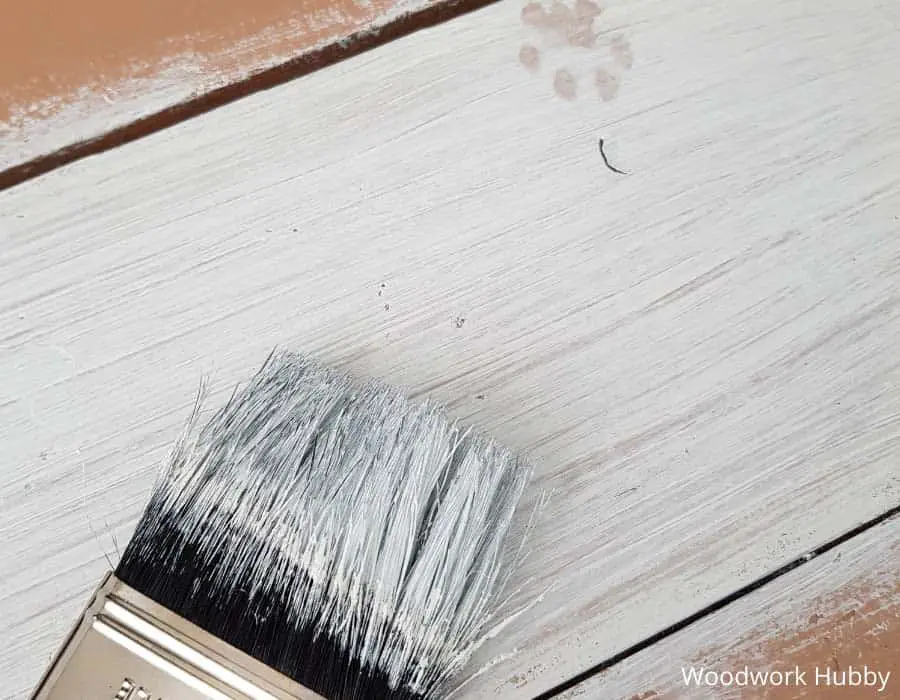You just primed some wooden boards for a project. The next step is applying paint, or is it? A buddy mentioned that you better let the wood acclimate before moving on, but you’re not so sure. Do you need to acclimate primed wood?
For most woodworking projects and especially hardwood flooring and trims, letting primed wood acclimate is best. That’s also true of assembling a woodworking project in the winter or if you have wet lumber. Acclimating reduces moisture that prevents warping, gaps, crowning, and/or cupping.
If you’re new to acclimating wood, this is one post you’re not going to want to miss. We’ll explain what acclimation is, then we’ll elaborate on whether acclimating primed wood is necessary. We’ll even delve into what happens if you don’t acclimate wood.
What Is Wood Acclimation?

Let’s rewind a minute here. What does it mean to acclimate wood in the first place, primed or unprimed? That’s a good question, so allow me to explain.
Acclimating wood is a type of conditioning or adjusting of the moisture in the wood. All wood has moisture, although how much varies. By measuring wood content moisture with a meter, you get a result as a percentage that tells you how wet the wood is.
A reading between 12 and 16 percent or under is ideally the reading you’ll get, as this wood is healthy. More than likely, the lumber was air-dried before it arrived to you. It may also be exterior wood.
Anything over 16 percent is concerning, especially if you use this kind of wood to build household structures. For instance, between 16 and 20 percent moisture, wood that wet would indicate a leak somewhere. Wood that has a moisture content between 20 and 28 percent is about to decay, while a reading over 28 percent tells you that the wood is decaying or soon will be.
If you have several wooden boards, you need to take a moisture reading for each one, as the moisture content can be different from board to board, although likely not by a huge percentage.
Acclimatizing Your Wood Means It Will Take On The Same Moisture Content As Its Surroundings.
When you acclimate wood, its moisture content is now in line with the environment in which it will be installed. In other words, its equilibrium moisture content is the same as the room the wood will be in while accommodating the room’s temperature and relative humidity.
You most hear of acclimating wood for hardwood floors, so we’ll use that as our example here. If you’re installing hardwood flooring in the living room, you’d need an equilibrium moisture content that matches the living room with considerations for the humidity and temperature of the room.
Does Primed Wood Need to Acclimate?
Wood should always be let settle in its new environment before using it. Wood can still take on moisture even though it has been primed.
Let’s assume that you’re not working on hardwood flooring, but you’re building a bookshelf for a friend’s entertainment room. Since you intend to paint the bookshelf, you primed the wood. The solids within the primer patched over the wood grain gaps so your paint job will look smooth, polished, and appealing.
You have yet to pick up a paintbrush, but still, now you’re wondering about the moisture content of your primed wood. Should you let the wood acclimate or does it not have to since you applied the primer?
Well, let’s look at wood primer a little more closely to answer that question. Wood primer consists of polyethylene or plastic, an additive agent, solvent, and synthetic resin. It goes on wet like any paint, so at that point, the wood you primed would be wetter. Then primer dries–typically within one to three hours–and the wood is drier too.
Even still, giving the primed wood the chance to acclimate is always a good idea. It doesn’t matter if you’re only building a bookshelf instead of installing new hardwood flooring, wood moves. It shrinks and expands according to the temperatures and moisture levels.
By acclimating, the moisture levels are reduced enough that the wood will shrink and stay that way, which is recommended for woodworking.
Whatever you assemble using the shrunken wood now will only get tighter as the weather warms up and the wood expands. Working with wet wood will cause the opposite issue. The wood starts off being very snug when you put it together, then it shrinks in the cold and has a lot of issues. Keep reading to learn exactly what those issues are.
Okay, so you should acclimate primed wood, but what about if you stain the wood? Yes, it’s true in that case, and if you paint wood as well. Ideally, you should acclimate raw wood and then prime, paint, or stain it.
How Long Does It Take Primed Wood to Acclimate?
Primed wood should be left to stand for 3 days to acclimate. This is true for fine weather conditions. The wood needs to be in the environment it is going to be used in or nearby.
We recommend you have another woodworking project to do in the meantime, as you won’t be getting back to this one for a while.
When acclimating your primed wood, make sure you keep it in a place without many temperature fluctuations, as that can make the entire process take longer.
After three days, is your primed wood necessarily acclimated? Maybe, but maybe not. The wood species you’re working with can affect acclimation time, as can the wood product you’re making. The best way to know whether your wood is ready is to test its moisture level.
When wood has reached equilibrium moisture content, it doesn’t lose moisture, but it doesn’t gain any either.
It’s only at that point that you can consider the primed wood properly acclimated. Maybe that takes three days or maybe it takes five or six.
What Happens If You Don’t Acclimate Wood?
Let’s say that you came across this article too late. You primed your wood, painted it, and used it to build your bookshelf. Maybe you even thought you knew better so you intentionally decided to skip acclimating the wood.
What are the consequences of having passed on this crucial step? Here’s what you should expect to happen to the wood.
Gaps
Remember, when wood loses moisture through acclimation, it shrinks. Then, when reintroduced to moisture such as from humidity on a hot summer’s day, the wood grows in size through expansion. Without properly shrinking the wood first, once the cold winter weather causes the un-acclimated wood to shrink, you’ll be left with obvious gaps.
In hardwood flooring and house trim, this looks terrible. If you’re building something with wood such as a bookcase, now the structural integrity of the whole case is in question.
Cupping
When wood cups, it sags in the middle like a cup does. The edges though are still straight. Your bookshelf might not be able to support its own weight if it’s severely cupping. Hardwood flooring cupping will not feel right to walk upon.
Buckling
Buckling can only occur in hardwood floors. When it happens, moisture has increased to such a degree that the subfloor and the main hardwood floor separate from one another. This would be quite pricy to get fixed, that’s for sure!
Warping
Wood isn’t designed to stay very wet. When it does, it gets pliable and prone to warpage. Warped wood is disfigured and not safe to continue using.
Crowning
The opposite of cupping can also occur to un-acclimated wood, which is known as crowning. The middle of the board will be crowned upwards which is basically like cupping but upside down. This too weakens the structure of your woodworking project.
Can You Speed up Wood Acclimation?
You hadn’t realized it would take 72 hours for the wood to acclimate, including primed wood. You were trying to build this bookshelf for a friend’s birthday party this weekend, so it needs to be done a lot sooner than three days from now.
Is there any way to make wood acclimate faster than three days? Possibly, but it’s not likely. The three-day acclimating window is the woodworking industry standard. It’s how long any professional would tell you to wait.
Using raw versus primed wood might make a slight difference in acclimation speed, but then again, it might not. Storing the wood in a temperate condition will keep you on track for three days of acclimation, but we wouldn’t say the job would happen faster.
Patience really is key here, as is preplanning. Now you know even better for your next woodworking project!
Conclusion– Does Primed Wood need to Acclimate
Acclimating wood is most commonly associated with hardwood flooring and household trim projects, but we’d recommend acclimating primed wood for other uses as well. The norm for acclimating is three days. Failing to acclimate wood can cause warping, buckling, gaps, and crowning, none of which looks good or is healthy for the wood. Best of luck with your woodworking project!




